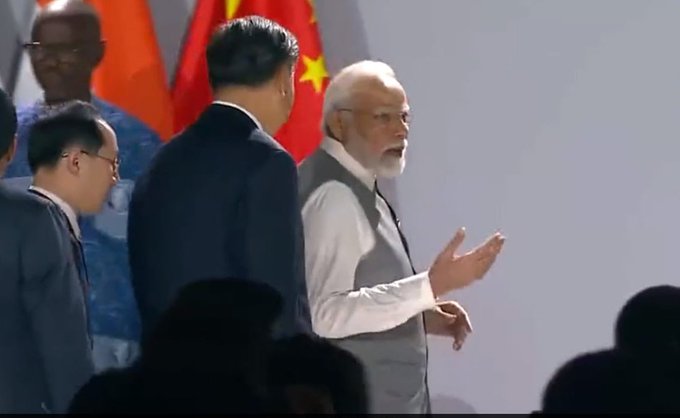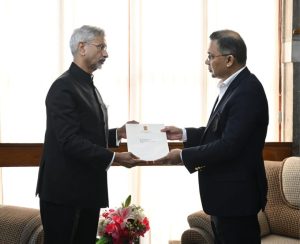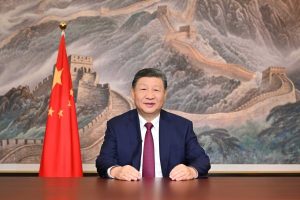China’s shifting sands on border issue with India

PM Narendra Modi with Chinese President Xi Jinping on the sidelines of BRICS Summit in Johannesburg.
By Manish Anand
New Delhi, August 29: Eleven days ahead of the G20 Leaders’ Summit, China provoked India once more by laying claims on Arunachal Pradesh by releasing its 2023 standard map. India officially lodged a strong protest and said that “such steps by China complicates the resolution of the boundary question”.
The release of the standard map 2023 by China came close on the heels of its President Xi Jinping telling Prime Minister Narendr Modi during a chat on the sidelines of the BRICS Summit that the border issue is a historical legacy and the bilateral relations may not be seen entirely in this backdrop.
Nineteen rounds of military commanders’ meetings have been held to resolve the border standoff in eastern Ladakh with no breakthrough. China had claimed that there existed “Bali Consensus” between Xi and Modi to maintain peace and tranquility on the border.
But the strategic experts see a clear pattern in the shifting sands of China’s stance in negotiating the border settlement with India. Former foreign secretary Shyam Sharan during an interaction at the India International Centre (IISC) had exhaustively elaborated the shifting sands of Chinese stance on border settlement issue. “From the stand of ‘we take the west and you take the east (formalizing the status quo’, China has gradually been becoming belligerent on its claims on Indian territories since the 1980s,” Sharan had said, arguing that the change in the stance was best explained to the prospects of India becoming a rival and a possible tool for the West to contain Beijing.
China has regularly been issuing stapled visas to the sportspersons from Arunachal Pradesh. China had also been lodging protests over the visits of the leading politicians to the eastern state. There is also a growing demand within India to revisit its policy on Taiwan and Tibet, as well as One China Policy, which is sensitive to Beijing.
“We have today lodged a strong protest through diplomatic channel with the Chinese side on the so-called 2023 standard map of China that lays claims on India’s territory. We reject these claims as they have no basis. Such steps by the Chinese side only complicate the resolution of the boundary question,” Arindam Bagchi, spokesperson of the Ministry of External Affairs, said on Tuesday.
Incidentally, the border tension with China since the Galwan clash is fast becoming a political issue in India, with the Opposition pressing the Narendra Modi government to state the fact on the ground. With the Chinese map released in the run up to the G20 Summit, Modi is also likely to be under pressure to avoid showing warm hospitality to Xi if he visits New Delhi.





